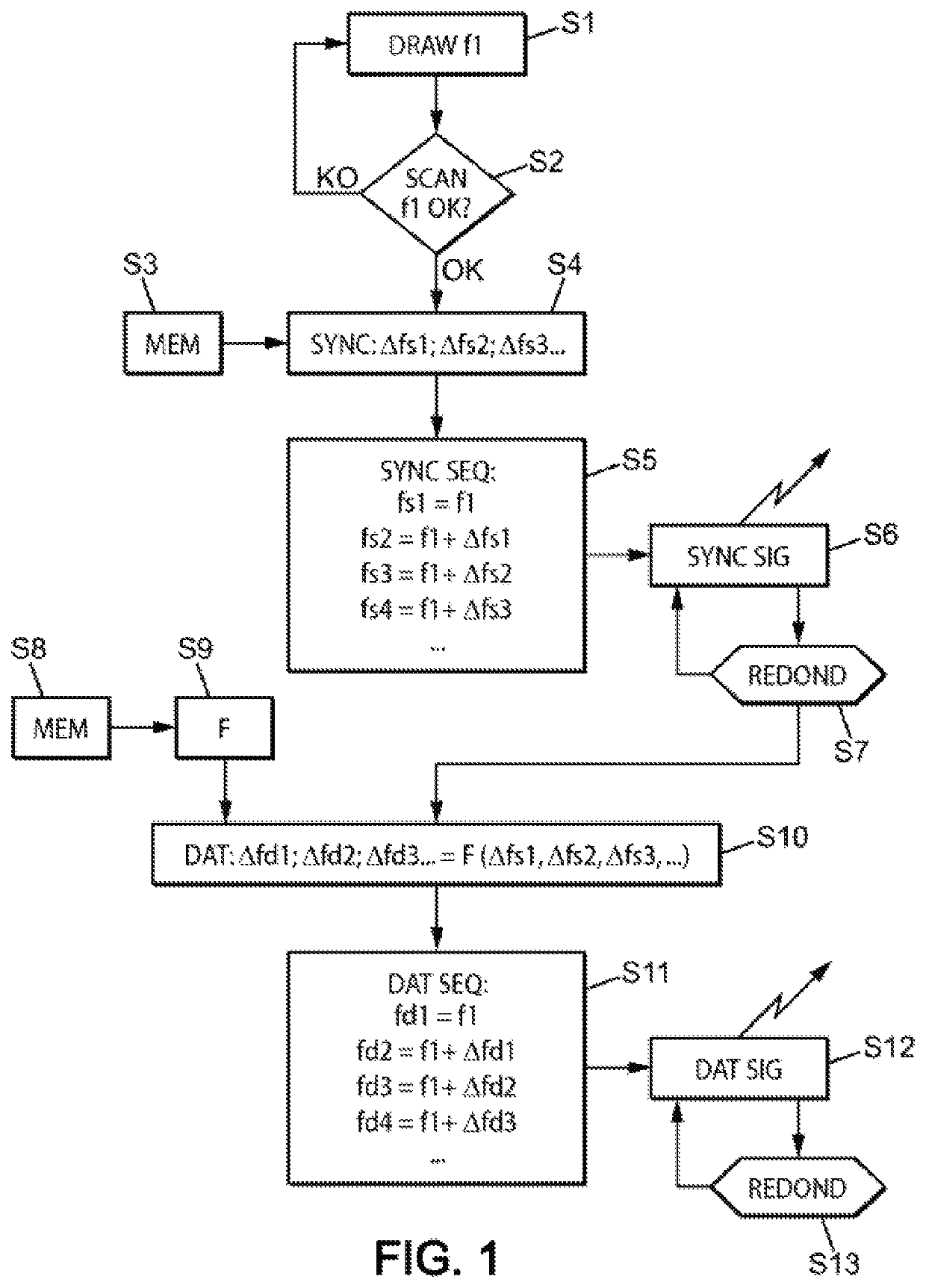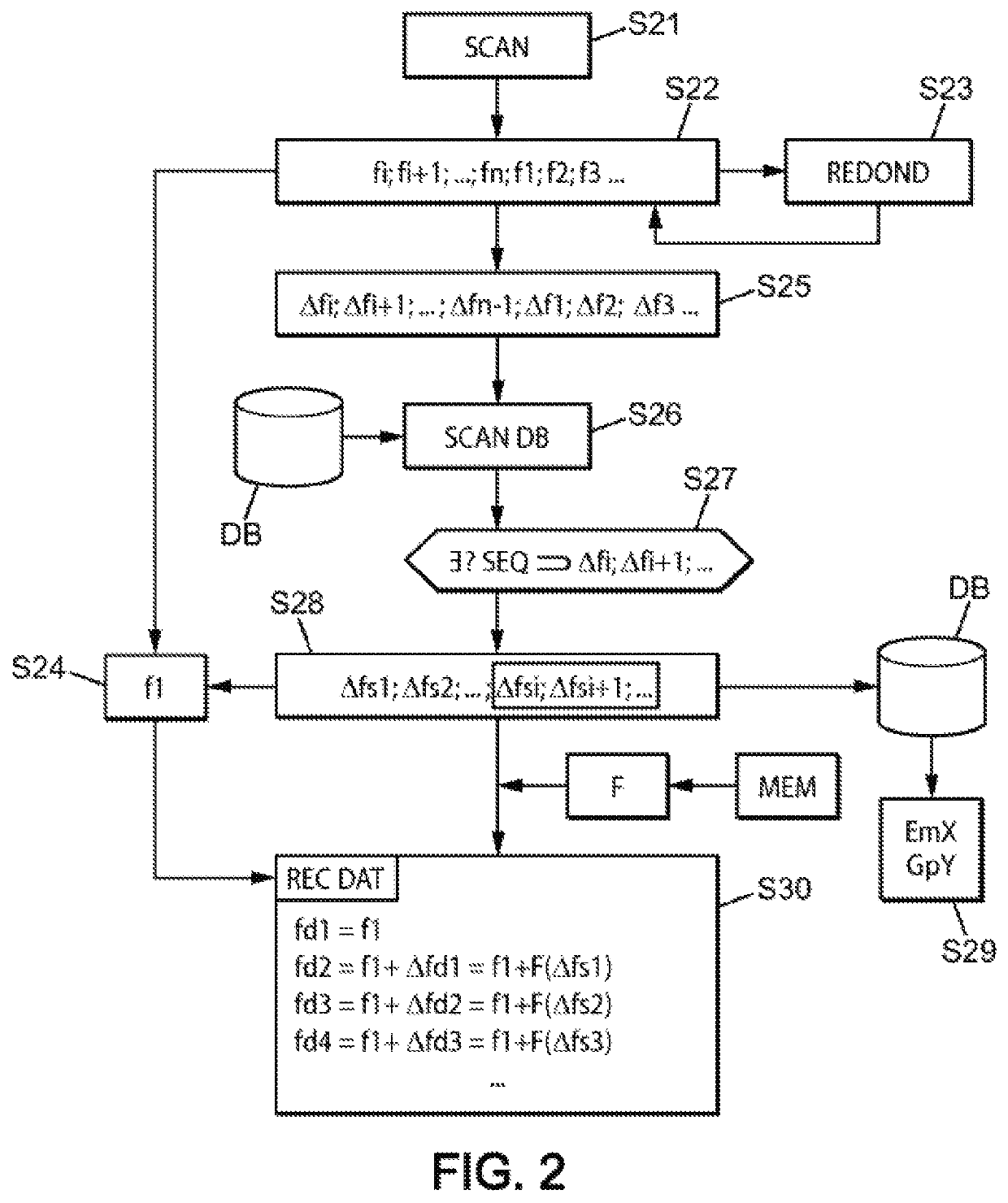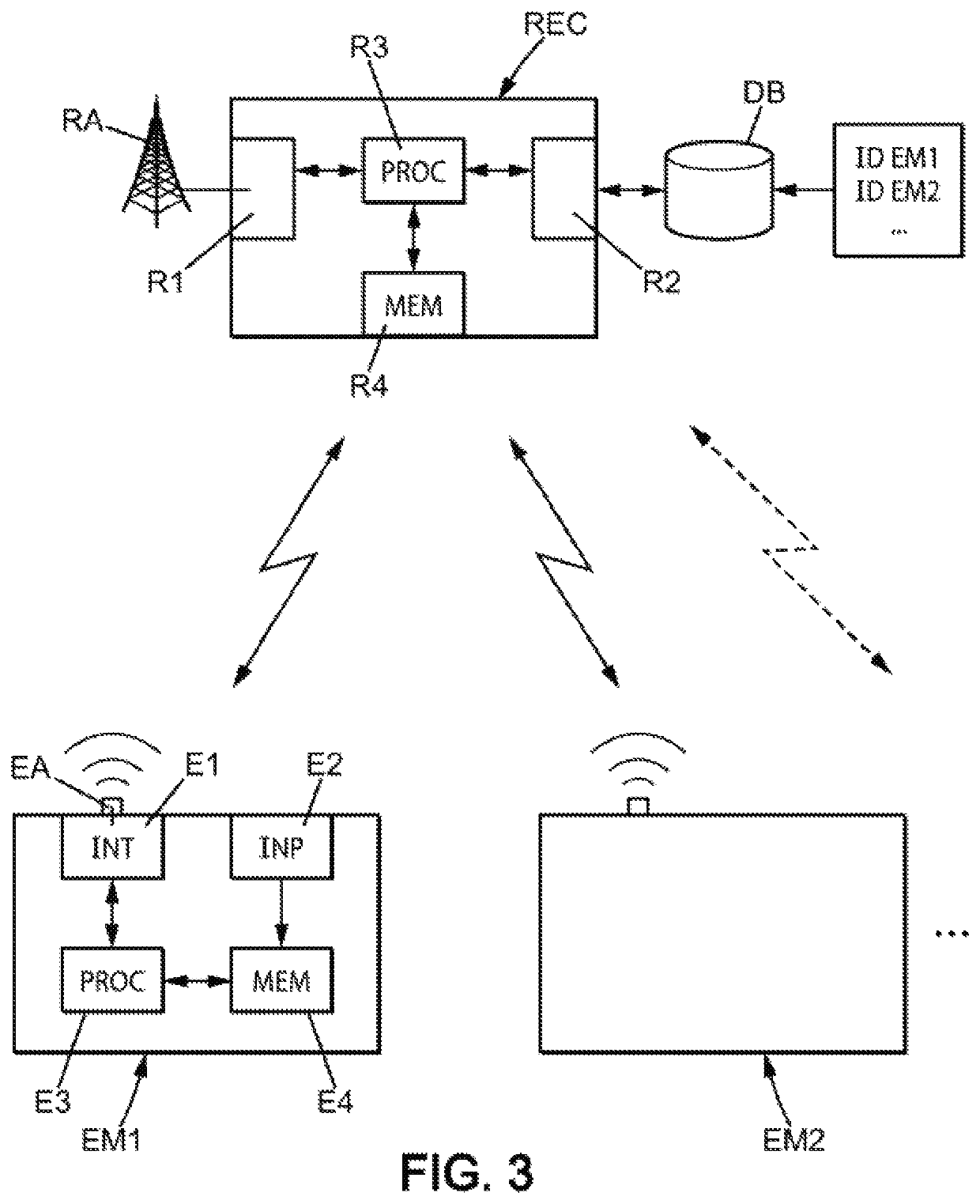Data transmission/reception by frequency hopping
a data transmission and frequency hopping technology, applied in digital transmission, signal allocation, transmission path sub-channel allocation, etc., can solve the problems of low information nitrate, deep fading phenomena affecting the entire radio signal, low cost and complexity, etc., and achieve sufficient independence and preserve the sensitivity of selective frequencies
- Summary
- Abstract
- Description
- Claims
- Application Information
AI Technical Summary
Benefits of technology
Problems solved by technology
Method used
Image
Examples
Embodiment Construction
[0054]Referring to FIG. 1 which illustrates the implementation of an exemplary embodiment of the method at a transmitter, in a first step S1, the transmitter randomly selects a frequency f1 within the entire band of available frequencies (said “first frequency band”, for example around 868 MHz for LoRA® or Sigfox®).
[0055]In one particular embodiment, in step S2, the transmitter listens for whether or not the channel corresponding to this frequency f1 is busy, and if this frequency is busy (KO arrow exiting test S2), randomly selects a different other frequency f1, and again checks the availability of the corresponding channel. The transmitter may for example perform this verification step according to the principle of “CSMA” (“Carrier sense multiple access”) or “LBT” (“Listen before talk”). The new frequency tested is different from the initial value, for example by a selected distance (typically greater than the bandwidth of the useful signal). In this manner it is possible to take...
PUM
 Login to View More
Login to View More Abstract
Description
Claims
Application Information
 Login to View More
Login to View More - R&D
- Intellectual Property
- Life Sciences
- Materials
- Tech Scout
- Unparalleled Data Quality
- Higher Quality Content
- 60% Fewer Hallucinations
Browse by: Latest US Patents, China's latest patents, Technical Efficacy Thesaurus, Application Domain, Technology Topic, Popular Technical Reports.
© 2025 PatSnap. All rights reserved.Legal|Privacy policy|Modern Slavery Act Transparency Statement|Sitemap|About US| Contact US: help@patsnap.com



